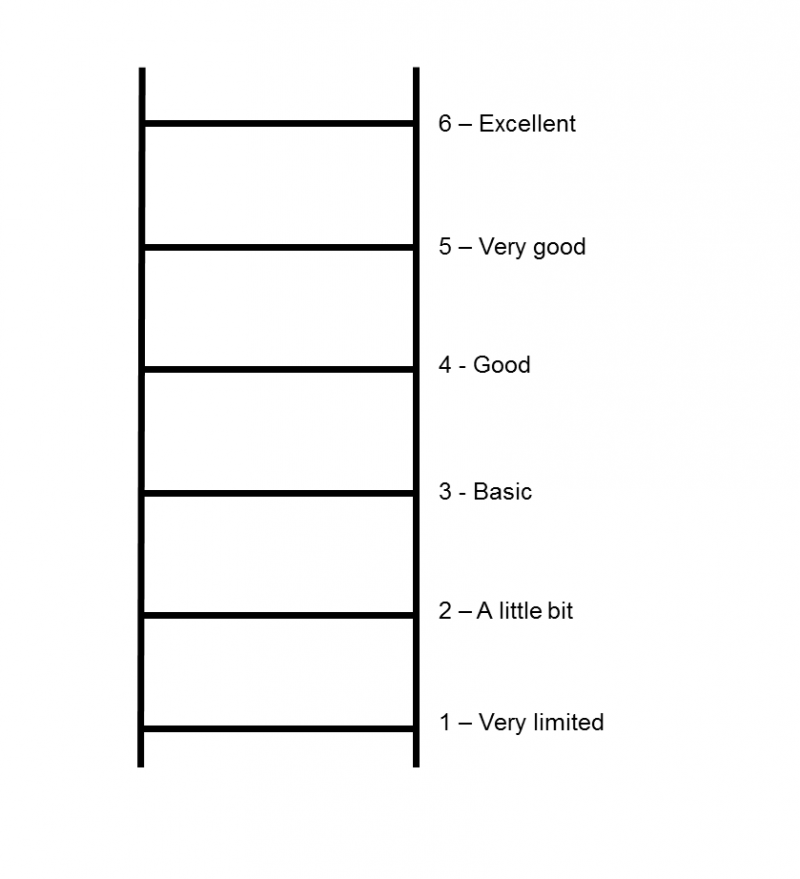Other activities to facilitate reflection about languages in the family

| Site: | Isotis |
| Course: | Promoting multilingualism in the family |
| Book: | Other activities to facilitate reflection about languages in the family |
| Printed by: | Guest user |
| Date: | Sunday, 14 September 2025, 12:34 AM |
1. Introduction
The activities in this folder are designed to stimulate reflections in the group about parents' languages and emotions connected to those languages. Parents are invited to draw pictures which represent something about themselves and their languages, and to share those with the group during the session.
To facilitate parents in making their drawings, examples of pictures can be shown to parents and templates for their own pictures are provided for parents.
2. CREATING A LANGUAGE SELF-PORTRAIT
You could start the session by using the resources from the 'observe and reflect' section to get participants discussing their thoughts and feelings about the children's self-portraits.
Questions for discussion:
What do you think about these drawings and the ways the children describe their pluri-lingual worlds?
What do these children think and feel about their languages?
Then, using this as inspiration, invite participants to create their own self-portrait, perhaps using the example and the blank template below.
Explain that they can use colours and body parts to express their multilingual self, encouraging them to provide annotations to explain their ideas further.
Once parents have created their portraits, you could also ask them to share their portraits with the group by taking a picture of them and posting them in a forum.
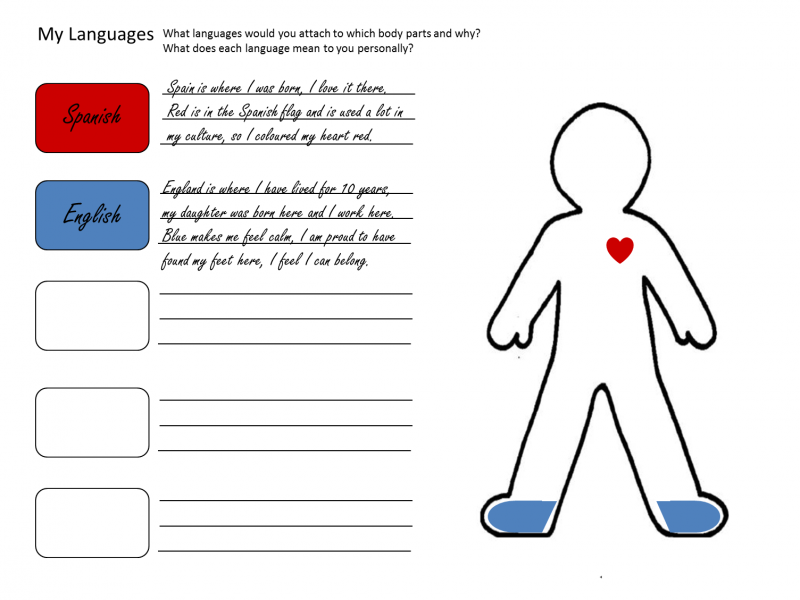
Template:
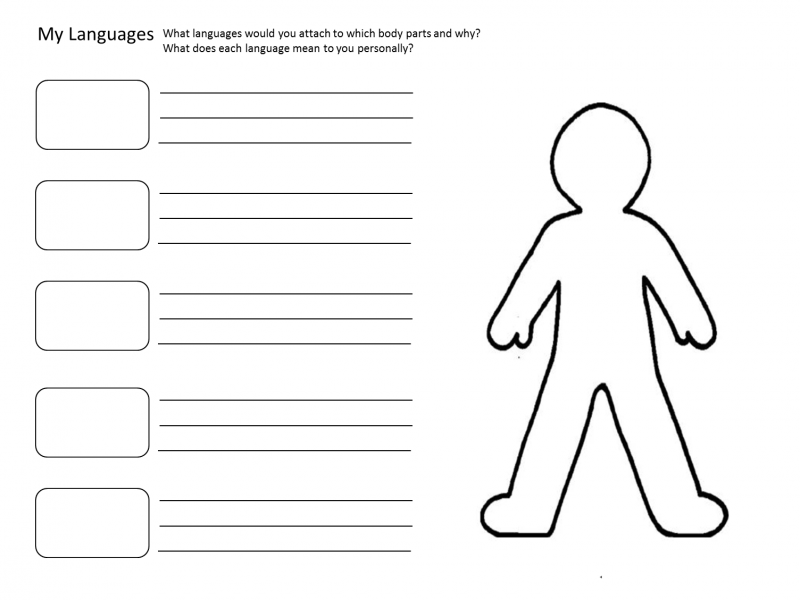


3. CREATING FAMILY LANGUAGE PROFILES
Using printed out templates, participants can fill out their family language profile whilst engaging in shared reflections on the issues of their multiple languages that they may experience in their families. The aim is to make the session a safe space for sharing, where all languages and heritages are valued as family resources and in which everyone learns that different families find different ways of coping.
During this activity, parents are asked to make ‘pictures/graphs’ of how they use the languages they know with their family members. When they talk to different family members, which language do they use? Which language do family members respond back in? Which languages does their child use when talking to others in the family?
They can also be asked to reflect and fill out information about how they engage with their children at home when doing different activities. (When I read with my child, I use….; when I tell my child a story, I use…; when I talk to my child about everyday experiences, I use….).
Template:
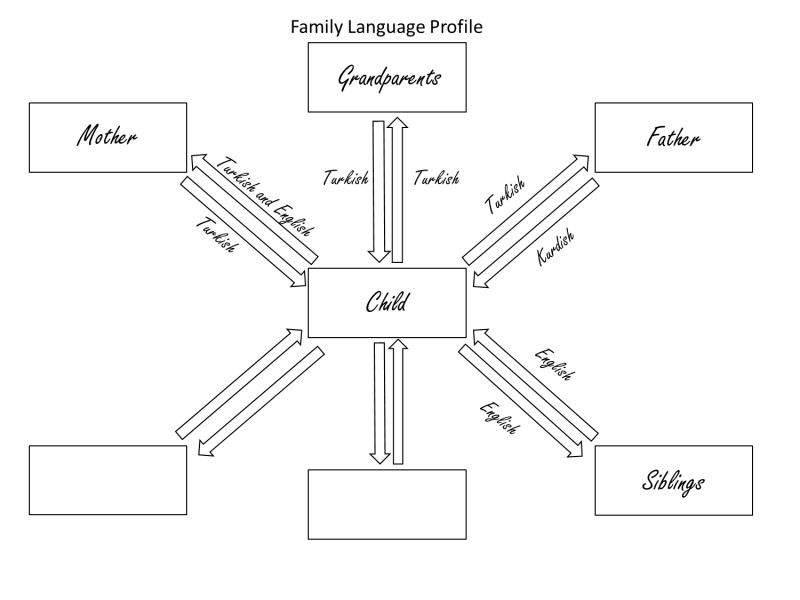

Example:
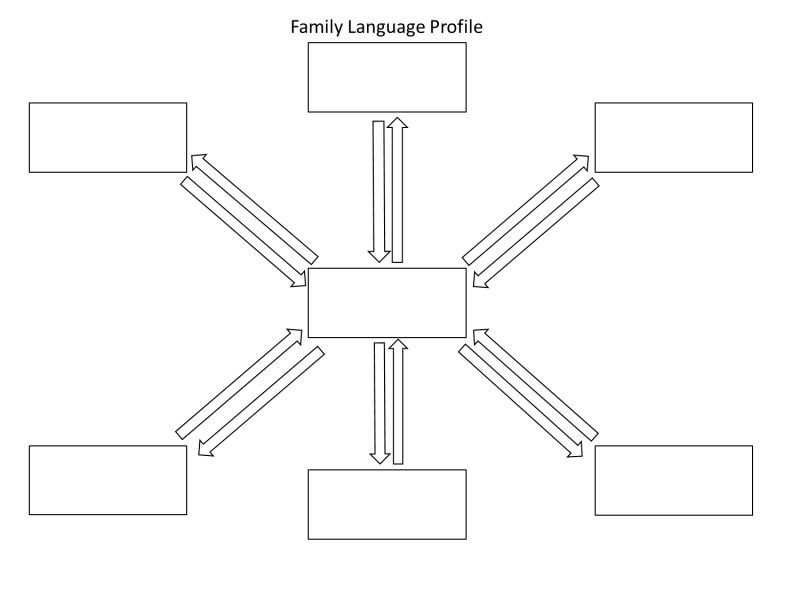

4. THE LANGUAGE COMPETENCY LADDER
This activity is designed to gauge how competent parents feel they and their family members are at both the heritage and the school (host) language.
First, consider showing parents this example from a similar activity carried out by TALES at Home:
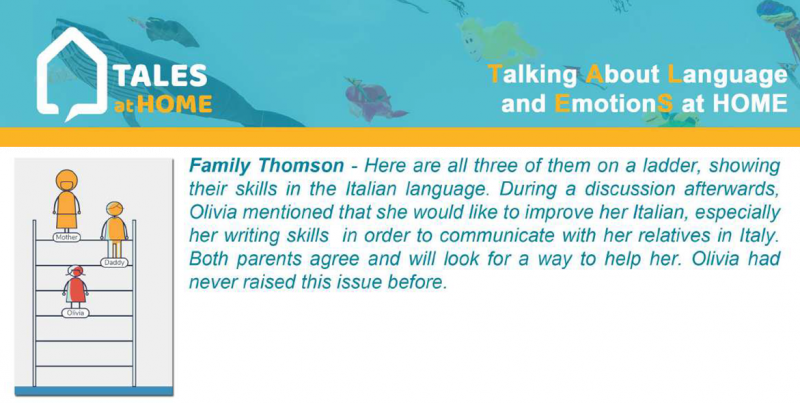

Then, using the ladder template below, participants can draw stick men onto two ladders - one for the home (parent present's language) and one for the school (host country) language. The ladder has six rungs, each with a description and a number, as seen below.
They can draw as many family members as they like, but encourage them to focus on where they believe their language skills are in relation to their children's.
For example, a mother might put her children's competency above her own in the school language, in which case you can encourage her to express how she feels about this. For the home language, a mother may feel her children are not as good at their heritage language as she would like them to be, and perhaps they are reluctant to learn - encourage discussion of this too.
Template:

